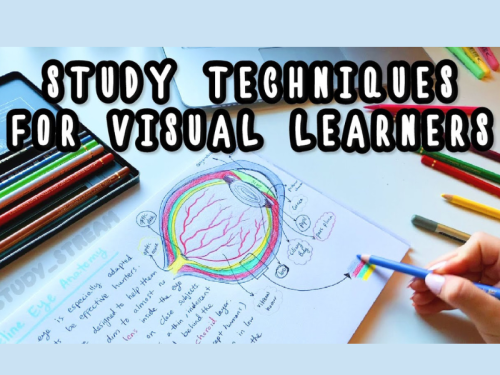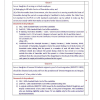Enhancing learning for visual learners: Exploring the best study techniques
In today’s diverse educational landscape, students possess unique learning styles that shape their understanding and retention of information. One prevalent learning style is visual learning, where individuals grasp concepts more effectively through visual aids and spatial representation. Recognising the importance of catering to different learning preferences, educators are constantly striving to implement effective study techniques for visual learners. By leveraging the power of visual stimuli, these techniques enhance comprehension, retention, and overall academic success.
Visual learners thrive when presented with information through visual aids such as charts, diagrams, infographics, and videos. These visual cues enable them to process and comprehend complex ideas more easily.
To maximise their potential, educators and students alike can incorporate the following best study techniques for visual learners:
- Mind Mapping: Mind maps are a powerful tool for visual learners to organise and connect ideas. By creating a visual representation of the topic, learners can link related concepts, highlight key points, and visualise the hierarchical structure of information. The spatial arrangement of a mind map enhances comprehension and recall.
- Graphic Organisers: Graphic organisers provide visual frameworks for organising and categorising information. They can take the form of Venn diagrams, concept maps, flowcharts, or timelines. These tools help visual learners grasp relationships between ideas, sequence events, and identify patterns, fostering a deeper understanding of the subject matter.
- Flashcards and Visual Mnemonics: Flashcards combined with visual cues and mnemonics are effective for visual learners in memorising facts, vocabulary, and key concepts. By associating images or symbols with specific information, visual learners can tap into their visual memory, making the recall process more efficient and engaging.
- Colour Coding: Visual learners greatly benefit from colour coding. By assigning different colours to various topics or categories, they can visually distinguish and organise information. This technique aids in quick retrieval of information during exams or when reviewing study materials.
- Visual Representation of Data: When dealing with numerical or statistical information, visual learners find it helpful to convert data into graphs, charts, or infographics. These visual representations simplify complex data sets, allowing learners to comprehend trends, patterns, and relationships more easily.
- Interactive Digital Tools: With the advent of technology, numerous digital tools and platforms cater specifically to visual learners. Interactive educational software, virtual simulations, and educational videos provide dynamic visual experiences that engage learners and enhance understanding.
- Visualisation and Imagery: Visual learners excel in creating mental images to represent information. They can leverage this strength by visualising concepts, processes, or scenarios to deepen comprehension. For example, when reading a story, visual learners can imagine the characters, settings, and events, thereby enhancing their engagement and retention.
- Visual Note-Taking: Traditional linear note-taking methods may not be as effective for visual learners. Encouraging them to employ visual note-taking techniques such as sketchnotes, doodling, or using icons and symbols can significantly improve their comprehension and memory recall.
By incorporating these study techniques, educators and students can tap into the inherent strengths of visual learners, unlocking their full academic potential. It is important to remember that learning styles can vary, and individuals may employ a combination of visual, auditory, or kinesthetic strategies. Thus, fostering a well-rounded learning environment that caters to diverse learning preferences is essential for comprehensive education.
As educators continue to explore and adapt to the needs of visual learners, the integration of these techniques into curriculum planning, teaching methodologies, and assessment practices can lead to improved educational outcomes. By recognizing and accommodating various learning styles, we can create a more inclusive and effective educational system that empowers every student to succeed.
Also Read: 10 Reasons why reading aloud to your child is the Best Gift you can give them
















Add comment